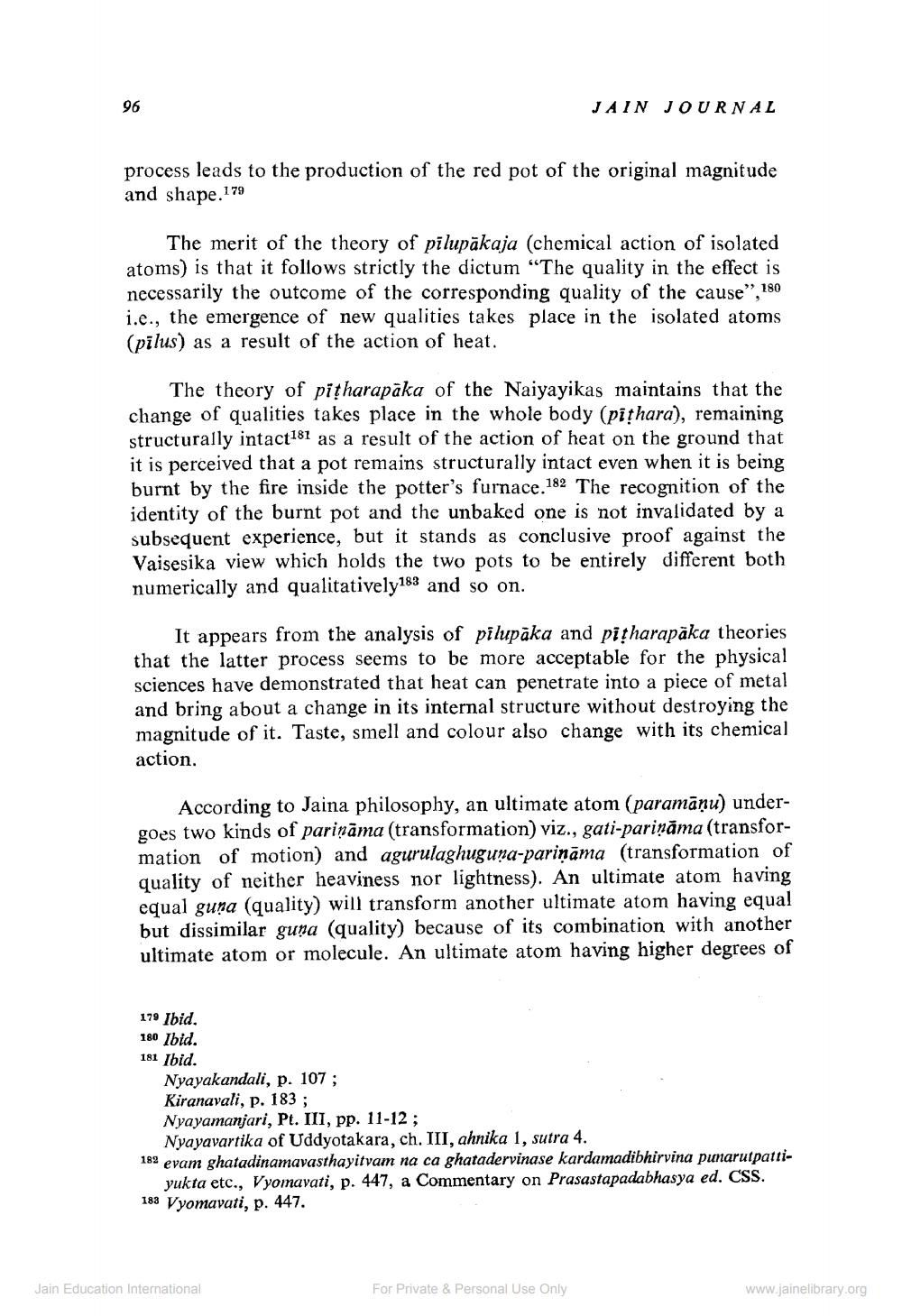________________
96
process leads to the production of the red pot of the original magnitude and shape.179
The merit of the theory of pilupākaja (chemical action of isolated atoms) is that it follows strictly the dictum "The quality in the effect is necessarily the outcome of the corresponding quality of the cause", 180 i.c., the emergence of new qualities takes place in the isolated atoms (pilus) as a result of the action of heat.
JAIN JOURNAL
The theory of pitharapaka of the Naiyayikas maintains that the change of qualities takes place in the whole body (piṭhara), remaining structurally intact181 as a result of the action of heat on the ground that it is perceived that a pot remains structurally intact even when it is being burnt by the fire inside the potter's furnace.182 The recognition of the identity of the burnt pot and the unbaked one is not invalidated by a subsequent experience, but it stands as conclusive proof against the Vaisesika view which holds the two pots to be entirely different both numerically and qualitatively 183 and so on.
It appears from the analysis of pilupaka and piṭharapaka theories that the latter process seems to be more acceptable for the physical sciences have demonstrated that heat can penetrate into a piece of metal and bring about a change in its internal structure without destroying the magnitude of it. Taste, smell and colour also change with its chemical action.
According to Jaina philosophy, an ultimate atom (paramāņu) undergoes two kinds of parināma (transformation) viz., gati-pariņāma (transformation of motion) and agurulaghuguna-parināma (transformation of quality of neither heaviness nor lightness). An ultimate atom having equal guna (quality) will transform another ultimate atom having equal but dissimilar guna (quality) because of its combination with another ultimate atom or molecule. An ultimate atom having higher degrees of
179 Ibid.
180 Ibid.
181 Ibid.
Nyayakandali, p. 107;
Kiranavali, p. 183;
Nyayamanjari, Pt. III, pp. 11-12;
Nyayavartika of Uddyotakara, ch. III, ahnika 1, sutra 4.
182 evam ghatadinamavasthayitvam na ca ghatadervinase kardamadibhirvina punarutpattiyukta etc., Vyomavati, p. 447, a Commentary on Prasastapadabhasya ed. CSS. 183 Vyomavati, p. 447.
Jain Education International
For Private & Personal Use Only
www.jainelibrary.org




